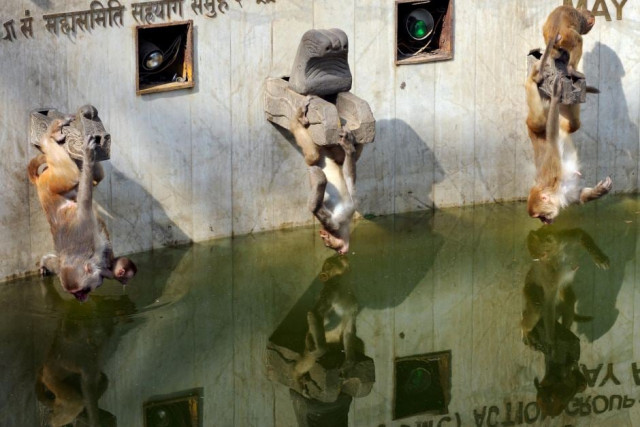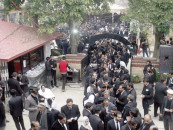Postcards from Nepal: The Monkey Temple
Tourists visit religious complex in Kathmandu Valley for religious reasons.

Monkey Temple. PHOTO: AFP
The Tibetan name for the site means Sublime Trees, due to the many varieties of trees found on the hill.
Over a dozen pinnacles on the top symbolize the various stages that sentient beings have to go through to reach enlightenment or Buddhahood.
The scenic temple is surrounded with beautiful trees and well-maintained residential houses. Several stalls selling jewelry, gems and other artifacts have been set up outside.
Emirates, who has been running his shop at the same spot for over a decade, boasts that he has met tourists from almost every country.
“I knew Benazir Bhutto of Pakistan who usually visited this place,” he said. Several tourists from across the world including the United Kingdom, Sri Lanka, India, Germany and other European countries visit the temple every year.
Tiwary, a tourist from India told The Express Tribune that his love for Buddhism had bought him to the temple.
“I did not come here to just capture photos. I found peace here,” he said. However, as winter starts creeping in and the number of tourists begins to decline, another vendor Santosh complains about the slow business. He said that he earned Rs 5,000-6,000 a day, which was not sufficient for his family.
https://vimeo.com/67393186


















COMMENTS
Comments are moderated and generally will be posted if they are on-topic and not abusive.
For more information, please see our Comments FAQ